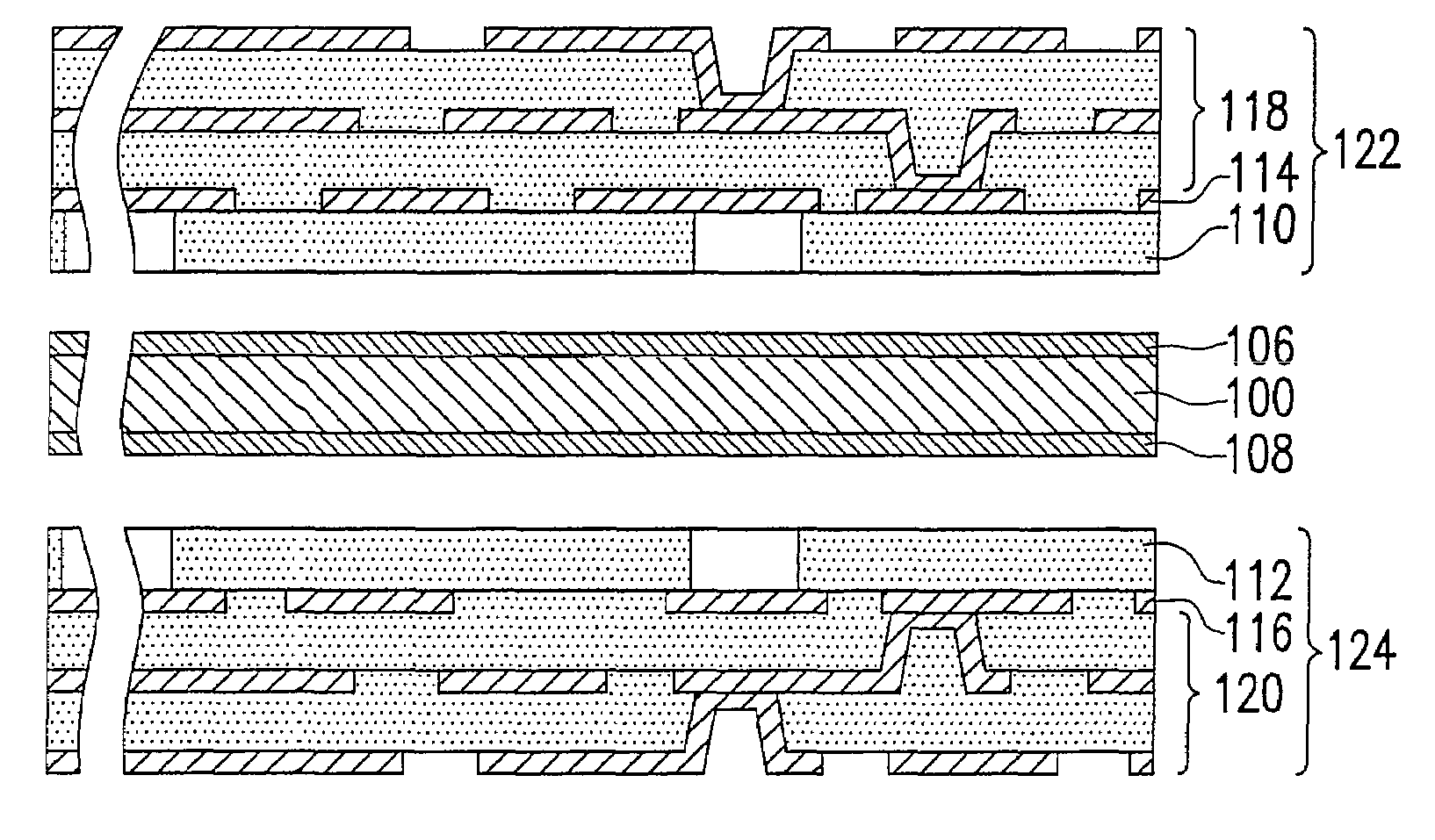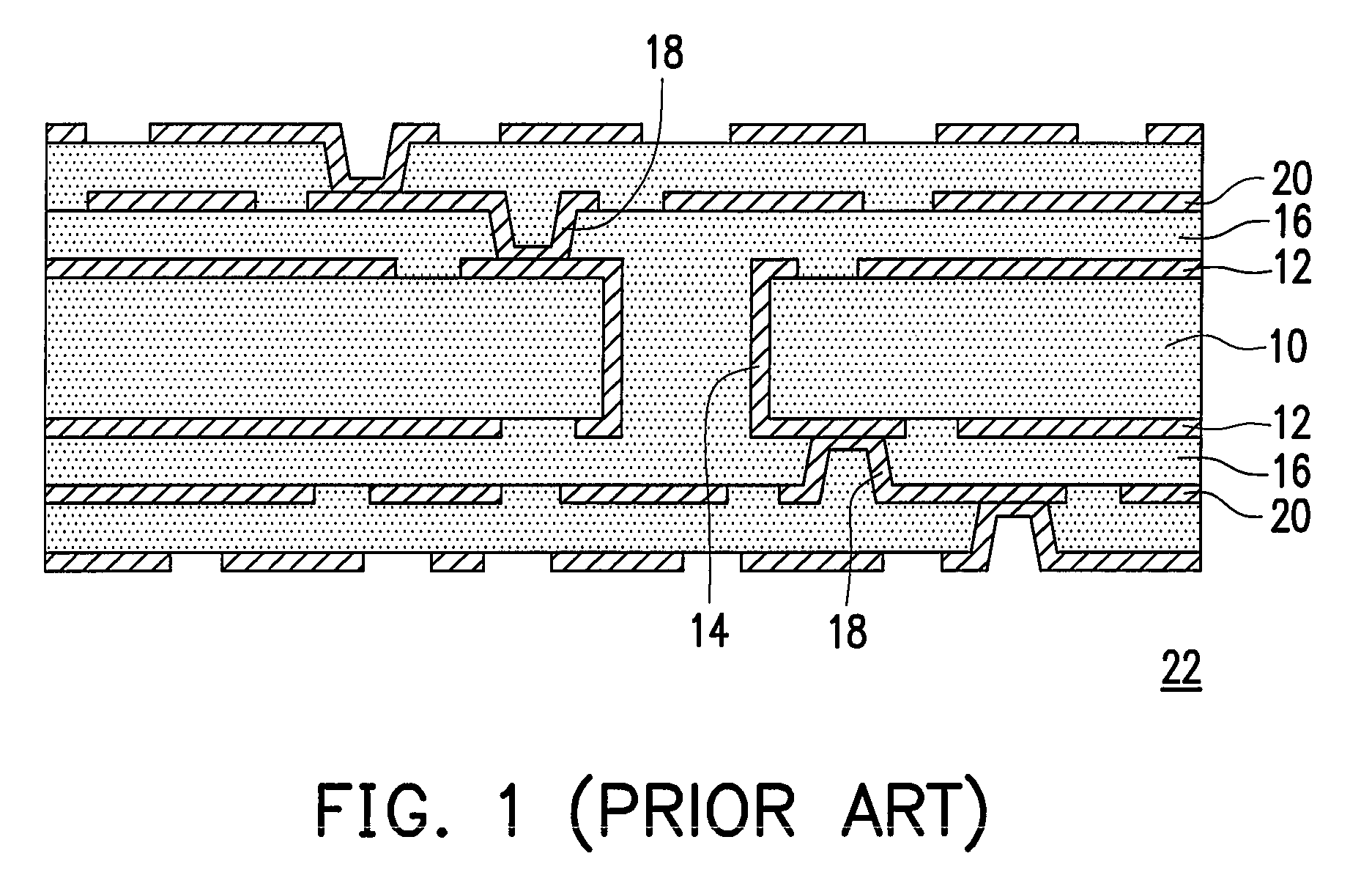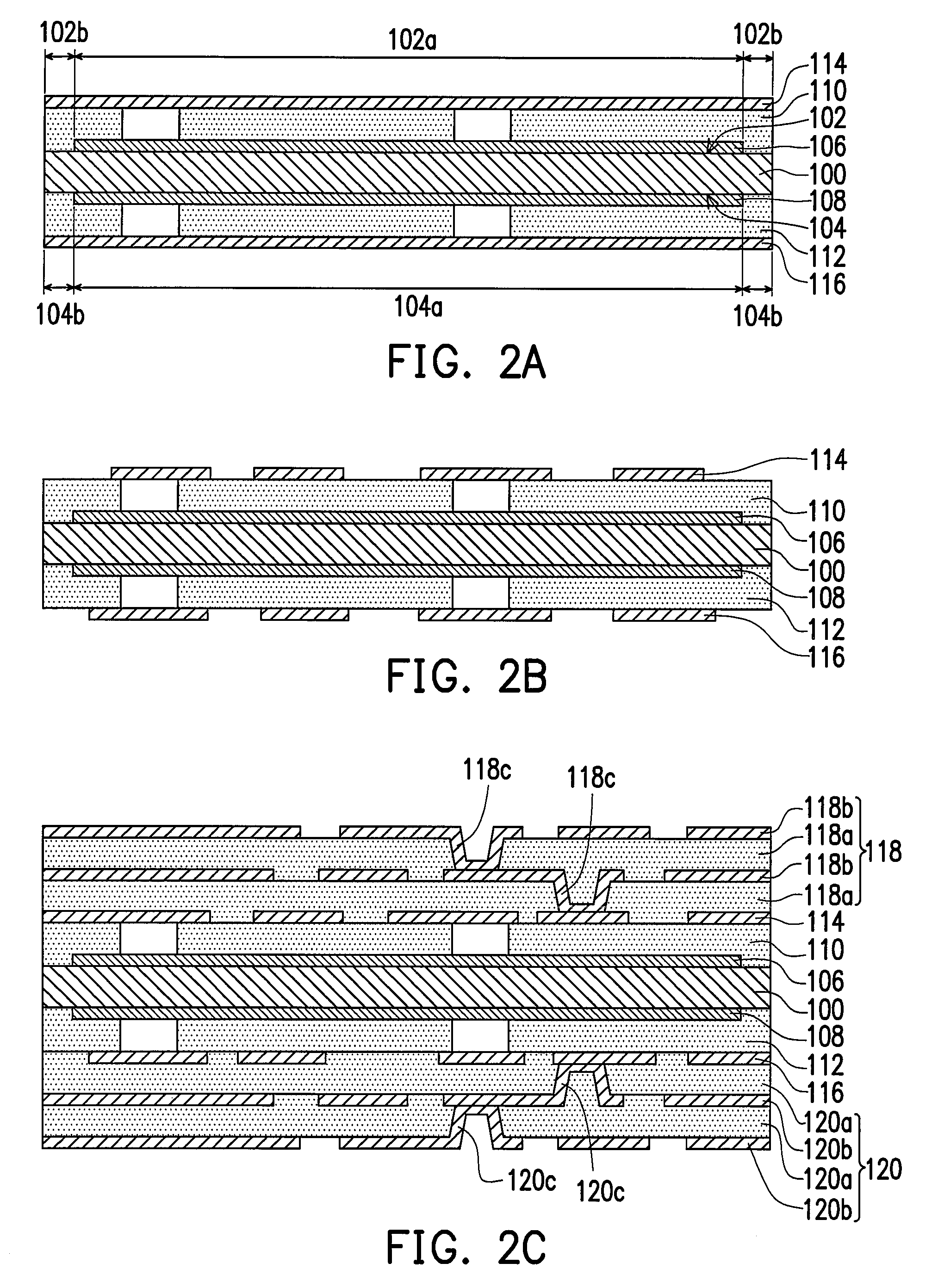Printed wiring board and method of fabricating the same
a technology of printed wiring boards and wires, which is applied in the manufacture of printed circuit boards, printed circuit assembling, lamination printed circuit boards, etc., can solve the problems of thickness exceeding the maximum allowable value of some products, and achieve the effect of reducing thickness
- Summary
- Abstract
- Description
- Claims
- Application Information
AI Technical Summary
Benefits of technology
Problems solved by technology
Method used
Image
Examples
first embodiment
[0026]FIGS. 2A to 2E are schematic, cross-sectional diagrams illustrating the process steps for fabricating a printed wiring board according to the present invention. Referring to FIG. 2A, first, a carrier plate 100 having a first supporting surface 102 and a second supporting surface 104 opposite to the first supporting surface 102 is provided. The first supporting surface 102 has a first release region 102a and a first bonding region 102b, and the second supporting surface 104 has a second release region 104a and a second bonding region 104b. The carrier plate 100 may be a thin metal plate such as copper plate.
[0027]As shown in FIG. 2A, a first release layer 106 and a second release layer 108 are arranged on the first release region 102a and the second release region 104a, respectively. In the first embodiment, a material of the first release layer 106 and the second release layer 108 may comprise dielectric material such as polyethylene terephthalate (PET).
[0028]As shown in FIG. ...
second embodiment
[0035]As shown in FIG. 3A, a first conductive layer 206 and a second conductive layer 208 are arranged on the first release region 202a and the second release region 204a, respectively. Wherein, a surface of the first conductive layer 206, which faces the first release region 202a of the carrier plate 200, has temporary adhesion; a surface of the second conductive layer 208, which faces the second release region 204a of the carrier plate 200, has temporary adhesion. In the second embodiment, the first conductive layer 206 and the second conductive layer 208 may be comprised of a metal such as copper.
[0036]As shown in FIG. 3A, a first dielectric layer 210 and a second dielectric layer 212 are arranged on the first supporting surface 202 and the second supporting surface 204, respectively, and a third conductive layer 214 and a fourth conductive layer 216 are arranged on the first dielectric layer 210 and the second dielectric layer 212, respectively. Next, a portion of the first diel...
PUM
| Property | Measurement | Unit |
|---|---|---|
| conductive | aaaaa | aaaaa |
| bonding force | aaaaa | aaaaa |
| dielectric | aaaaa | aaaaa |
Abstract
Description
Claims
Application Information
 Login to View More
Login to View More - R&D
- Intellectual Property
- Life Sciences
- Materials
- Tech Scout
- Unparalleled Data Quality
- Higher Quality Content
- 60% Fewer Hallucinations
Browse by: Latest US Patents, China's latest patents, Technical Efficacy Thesaurus, Application Domain, Technology Topic, Popular Technical Reports.
© 2025 PatSnap. All rights reserved.Legal|Privacy policy|Modern Slavery Act Transparency Statement|Sitemap|About US| Contact US: help@patsnap.com



